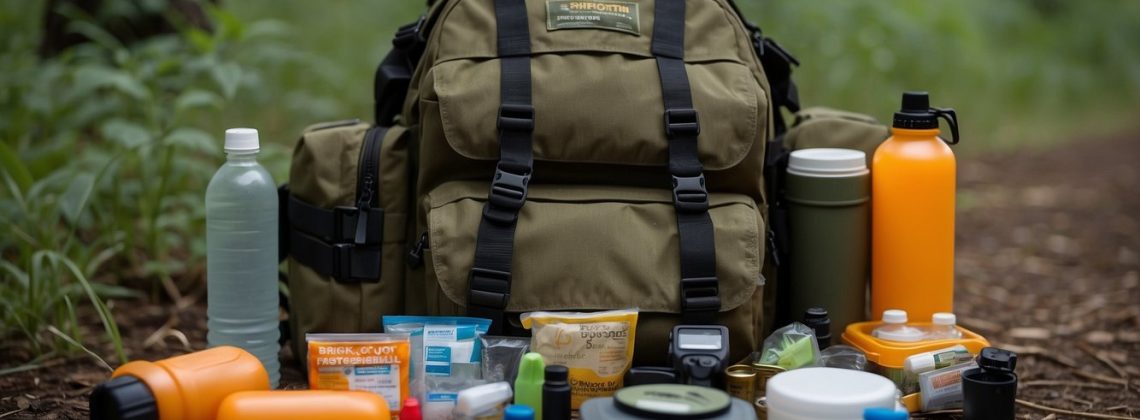
Bug out bags are a crucial component of emergency preparedness. They are designed to provide you with the essentials you need to survive for at least 72 hours in the event of an emergency. Whether you are facing a natural disaster, a power outage, or a civil unrest situation, having a well-stocked bug out bag can mean the difference between life and death.
Understanding Bug Out Bags is the first step in creating your own emergency preparedness plan. These bags are designed to be lightweight and portable, making them easy to grab and go in the event of an emergency. They should contain all the essentials you need to survive, including food, water, shelter, and first aid supplies. Choosing the right bag and packing it correctly are also essential components of creating an effective bug out bag.
Key Takeaways
- Bug out bags are essential for emergency preparedness and can mean the difference between life and death.
- Understanding the components of a bug out bag and how to choose the right bag is crucial.
- Proper packing strategies and personalization are important for creating an effective bug out bag.
Understanding Bug Out Bags
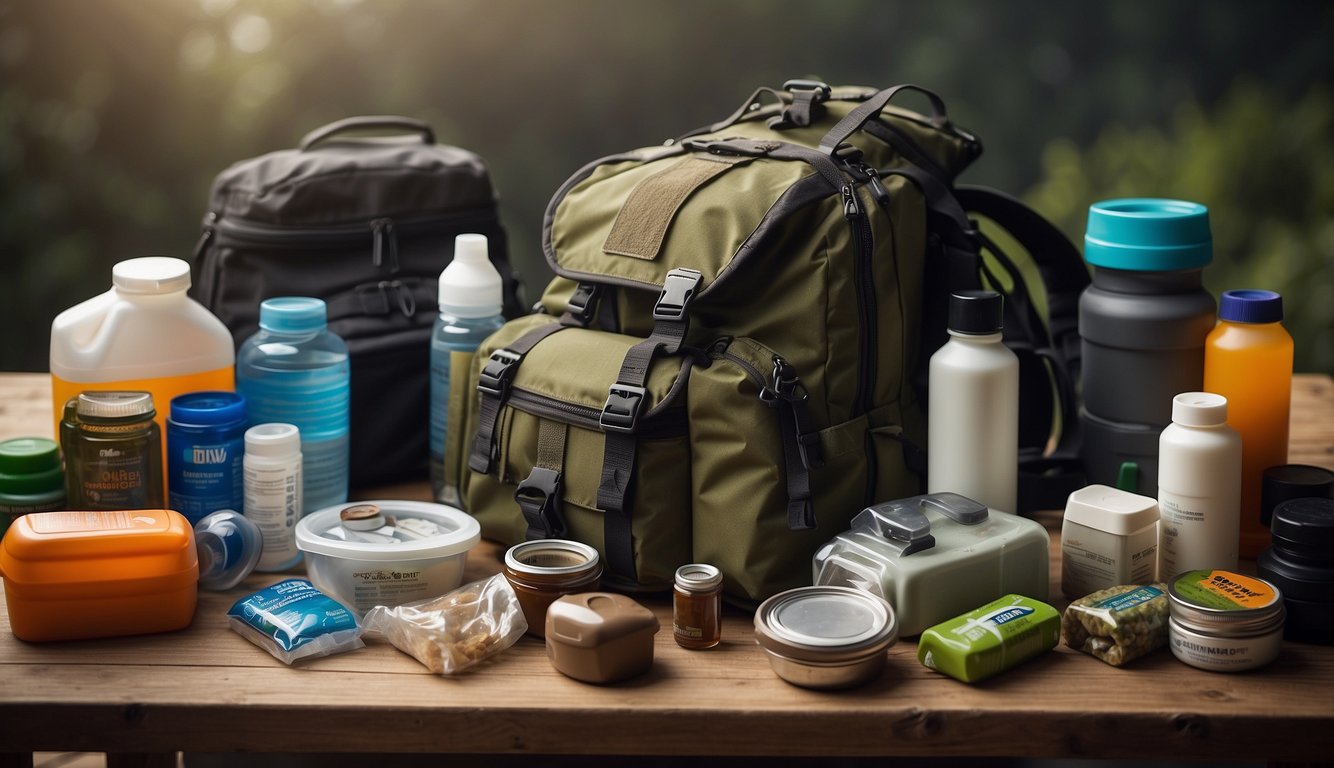
Definition and Purpose
A bug out bag, also known as a survival kit or emergency kit, is a portable collection of essential items that you can use to survive in case of an evacuation or emergency situation. The purpose of a bug out bag is to provide you with the necessary tools and supplies to survive for at least 72 hours, until you can reach a safe location or until help arrives.
A bug out bag should be customized to meet your specific needs and situation. It should contain items such as food, water, shelter, first aid kit, communication devices, and tools that can help you navigate, start a fire, or defend yourself.
Historical Context
The concept of a bug out bag dates back to military history, where soldiers would carry essential items in their backpacks to survive in case of an emergency. The term “bug out” originated from the military slang, which means to quickly leave an area or evacuate.
In recent years, the concept of bug out bags has gained popularity among civilians, especially those who live in areas prone to natural disasters or civil unrest. A bug out bag can be a lifesaver in case of an emergency, and it is essential to have one ready at all times.
Modern Usage
In today’s world, a bug out bag has become an essential item for anyone who wants to be prepared for an emergency situation. A bug out bag can be used in case of natural disasters such as earthquakes, hurricanes, or floods, or in case of civil unrest or terrorist attacks.
It is essential to keep your bug out bag up to date and regularly check the items to ensure that they are in good condition and functioning correctly. Your bug out bag should be stored in a location that is easily accessible and known to all members of your family or group.
In conclusion, a bug out bag is a crucial item for anyone who wants to be prepared for an emergency situation. By having a well-stocked bug out bag, you can increase your chances of survival in case of an evacuation or emergency.
Essential Components of a Bug Out Bag
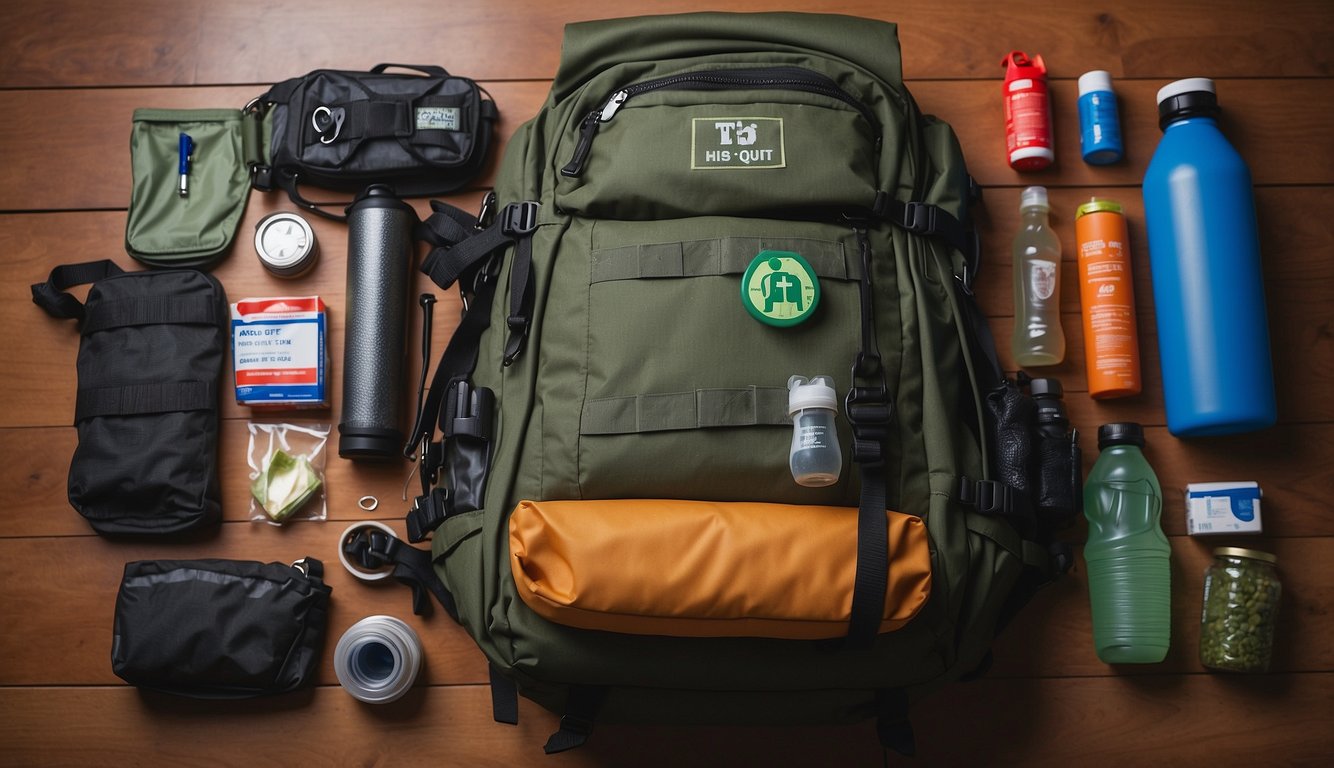
When it comes to preparing a bug out bag, it’s important to include the essential components that will help you survive in an emergency situation. Here are the must-have items that you should consider including in your bug out bag:
Water and Hydration
Water is essential for survival, and in an emergency situation, it’s important to have a way to access clean drinking water. Consider including a water filtration system or water purification tablets in your bug out bag. You should also include a reusable water bottle or hydration system to carry water with you.
Food and Nutrition
In an emergency situation, you may not have access to food for an extended period of time. It’s important to include non-perishable food items in your bug out bag, such as energy bars, canned goods, and dried fruit. You should also consider including a portable stove and fuel to cook food if necessary.
Shelter and Warmth
Having a shelter to protect you from the elements is crucial in an emergency situation. Consider including a tent or tarp in your bug out bag, as well as a sleeping bag or blankets to keep you warm. You should also include extra clothing to protect you from the cold.
First Aid and Health
Injuries and illnesses can happen at any time, so it’s important to have a first aid kit in your bug out bag. Your kit should include items such as bandages, antiseptic wipes, and pain relievers. You should also include any necessary medications that you may need.
Clothing and Protection
In an emergency situation, you may need to protect yourself from the elements or from potential threats. Consider including items such as a hat, gloves, and a rain jacket in your bug out bag. You should also include a sturdy pair of boots or shoes.
Tools and Equipment
Having the right tools and equipment can make all the difference in an emergency situation. Consider including items such as a multi-tool, a fire starter, and a compass in your bug out bag. You should also include any necessary equipment for your specific needs, such as a fishing kit or a signaling device.
By including these essential components in your bug out bag, you can increase your chances of survival in an emergency situation. Remember to regularly check and update your bug out bag to ensure that it remains fully stocked and ready to use.
Choosing the Right Bag
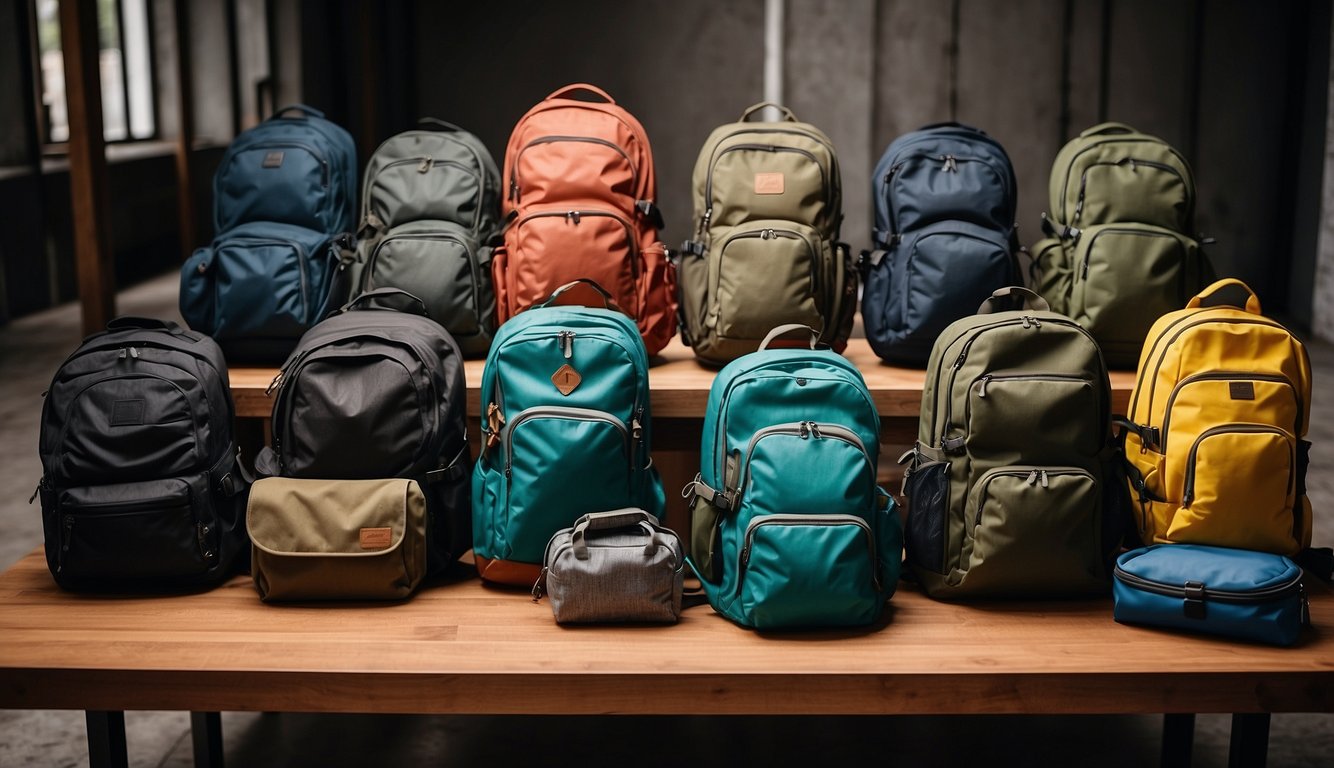
When it comes to choosing the right bag for your bug out kit, there are a few important factors to consider. You want a bag that is durable, comfortable, and has enough storage space for all of your essential gear. Here are some key features to look for when selecting a bug out bag:
Backpack Features
The first thing to consider is the backpack’s features. Look for a bag with multiple compartments and pockets, as this will make it easier to organize your gear and access it quickly. You may also want to consider a bag with MOLLE webbing, which allows you to attach additional pouches and accessories to the exterior of the bag.
Another important feature to consider is ventilation. Look for a bag with a breathable back panel and shoulder straps, as this will help prevent sweat buildup and keep you comfortable during extended periods of wear.
Size and Capacity
The size and capacity of your bug out bag will depend on your individual needs and preferences. A smaller bag may be more lightweight and easier to carry, but may not have enough space for all of your gear. On the other hand, a larger bag may be more spacious, but may also be heavier and more cumbersome to carry.
Consider the length of time you may need to survive with the contents of your bag, and choose a size that will accommodate all of your necessary supplies.
Material and Durability
Finally, consider the material and durability of your bug out bag. Look for a bag made from high-quality, waterproof materials that can withstand harsh weather conditions and rough terrain. Reinforced stitching and heavy-duty zippers are also important features to look for, as they will ensure that your bag can withstand heavy use over time.
Overall, choosing the right bug out bag is an important step in preparing for any emergency situation. By considering backpack features, size and capacity, and material and durability, you can select a bag that will meet your needs and keep you prepared for anything that comes your way.
Packing Strategies
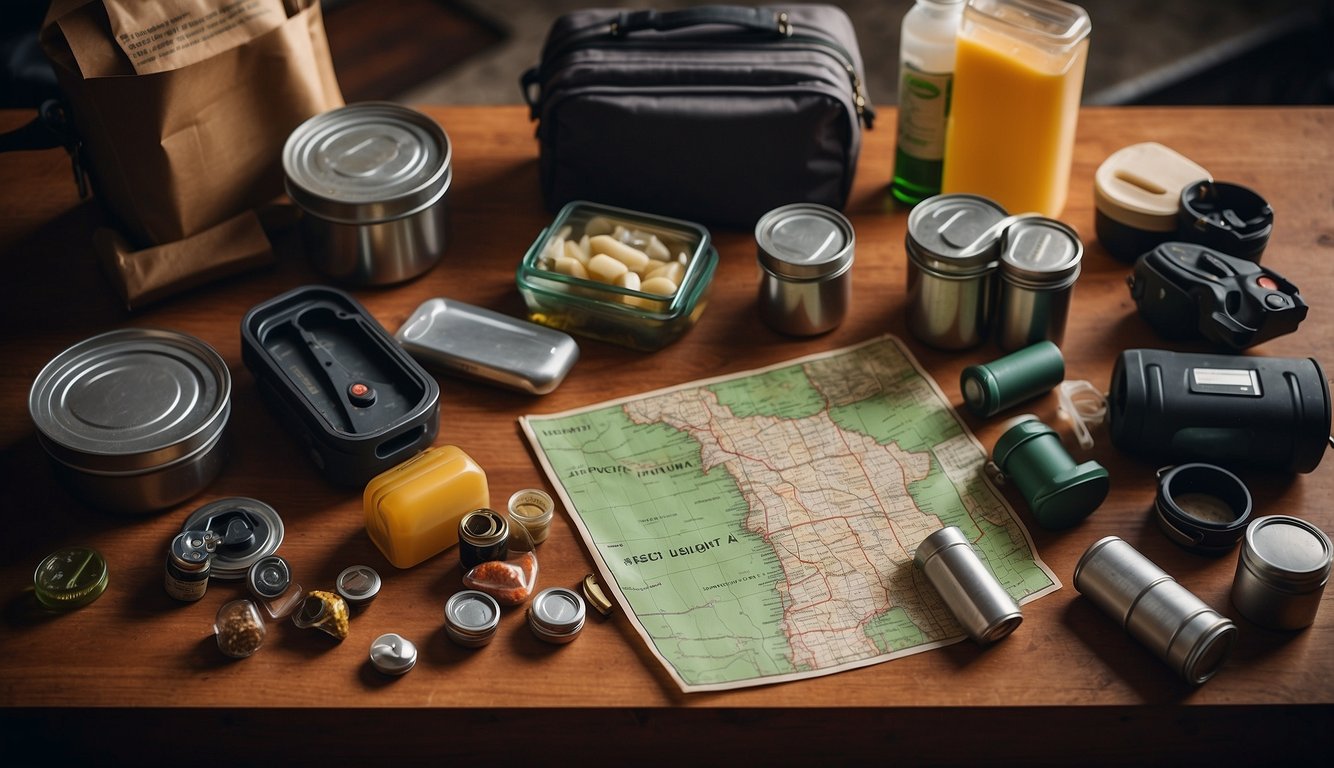
When it comes to packing your bug out bag, there are a few key strategies to keep in mind to ensure that you are prepared for any situation that may arise. Here are some tips to help you pack your bug out bag effectively.
Weight Distribution
One of the most important things to consider when packing your bug out bag is weight distribution. You want to make sure that the weight of your gear is evenly distributed throughout your bag to avoid putting too much strain on your shoulders or back. This can be achieved by placing heavier items closer to your back and lighter items towards the outside of the bag.
Accessibility
Another important factor to consider when packing your bug out bag is accessibility. You want to make sure that the items you need most frequently are easily accessible. This means placing items like your first aid kit, water, and snacks in easily accessible pockets or compartments.
Organization Tips
Keeping your bug out bag organized is essential to ensuring that you can quickly and easily find what you need when you need it. Here are some organization tips to help you keep your bug out bag in order:
- Use packing cubes or stuff sacks to keep similar items together and make them easier to find.
- Label your gear so that you can quickly identify what you need.
- Create a checklist of all the items in your bug out bag and check it regularly to ensure that you have everything you need.
By following these packing strategies, you can ensure that your bug out bag is packed effectively and ready for any situation that may arise.
Personalization and Special Considerations
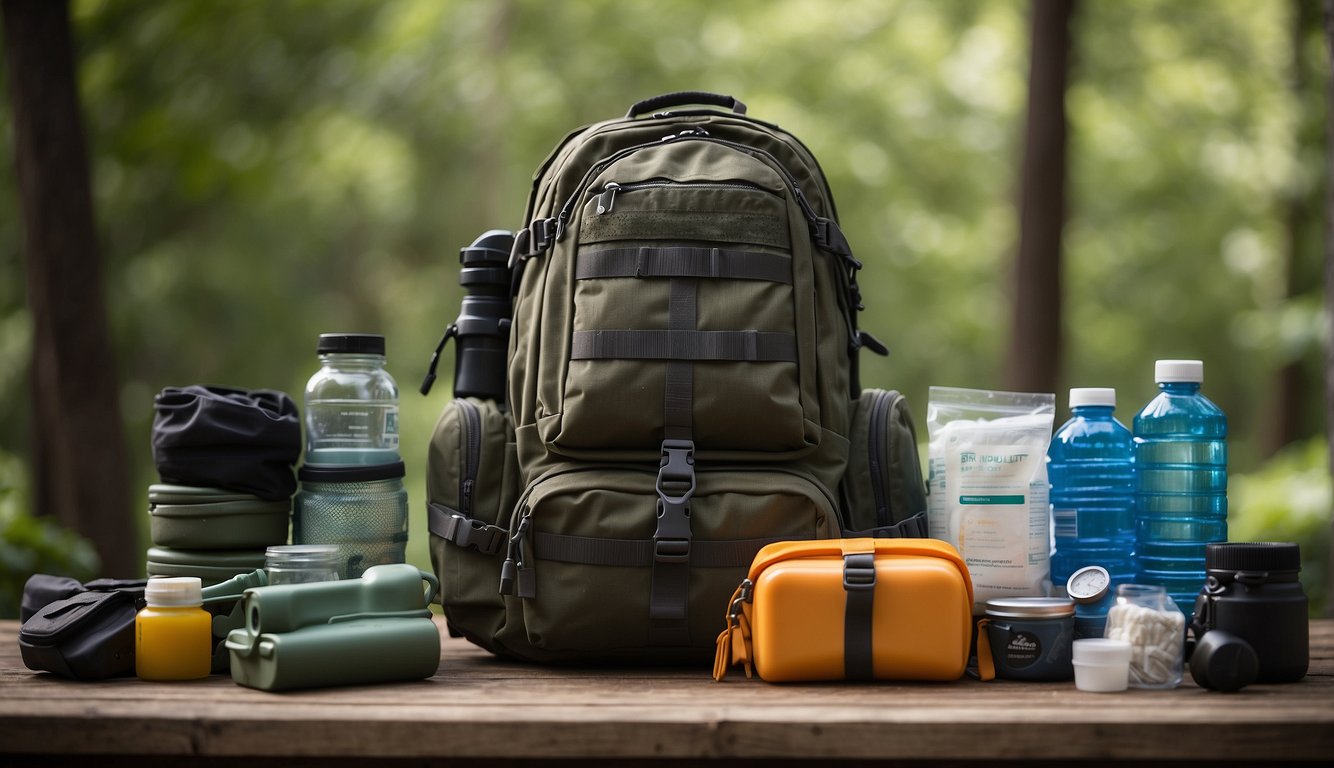
When it comes to bug out bags, personalization is key. Everyone has different needs and circumstances that must be taken into account. Here are some special considerations to keep in mind when putting together your bug out bag.
For Families with Kids
If you have children, you’ll need to make sure your bug out bag contains items that will keep them safe and comfortable. Consider including:
- Extra clothing and shoes in case they get wet or dirty
- Snacks and water to keep them fueled and hydrated
- Comfort items like toys or books to help them stay calm and occupied
- Medications or medical supplies specific to their needs
It’s also a good idea to involve your kids in the process of creating their own bug out bags. This will help them feel more prepared and in control in the event of an emergency.
For Individuals with Medical Needs
If you have a medical condition or require medication, make sure your bug out bag includes everything you need to manage your health. This might include:
- Prescription medications and a copy of your prescription
- Medical supplies like insulin, inhalers, or EpiPens
- Important medical information and contact information for your doctor
Consider packing duplicates of any critical medications or supplies in case one gets lost or damaged.
For Different Climates
The contents of your bug out bag will vary depending on the climate you live in and the time of year. If you live in a cold climate, you’ll need to include warm clothing and gear like gloves, hats, and blankets. If you live in a hot climate, you’ll need to include items like sunscreen, hats, and lightweight clothing.
It’s also important to think about the weather patterns in your area. If you live in an area prone to hurricanes or tornadoes, you may need to include items like waterproof bags or emergency ponchos.
Remember, your bug out bag should be tailored to your specific needs and circumstances. Take the time to think through all the possible scenarios you might encounter and pack accordingly.
Survival Skills and Knowledge
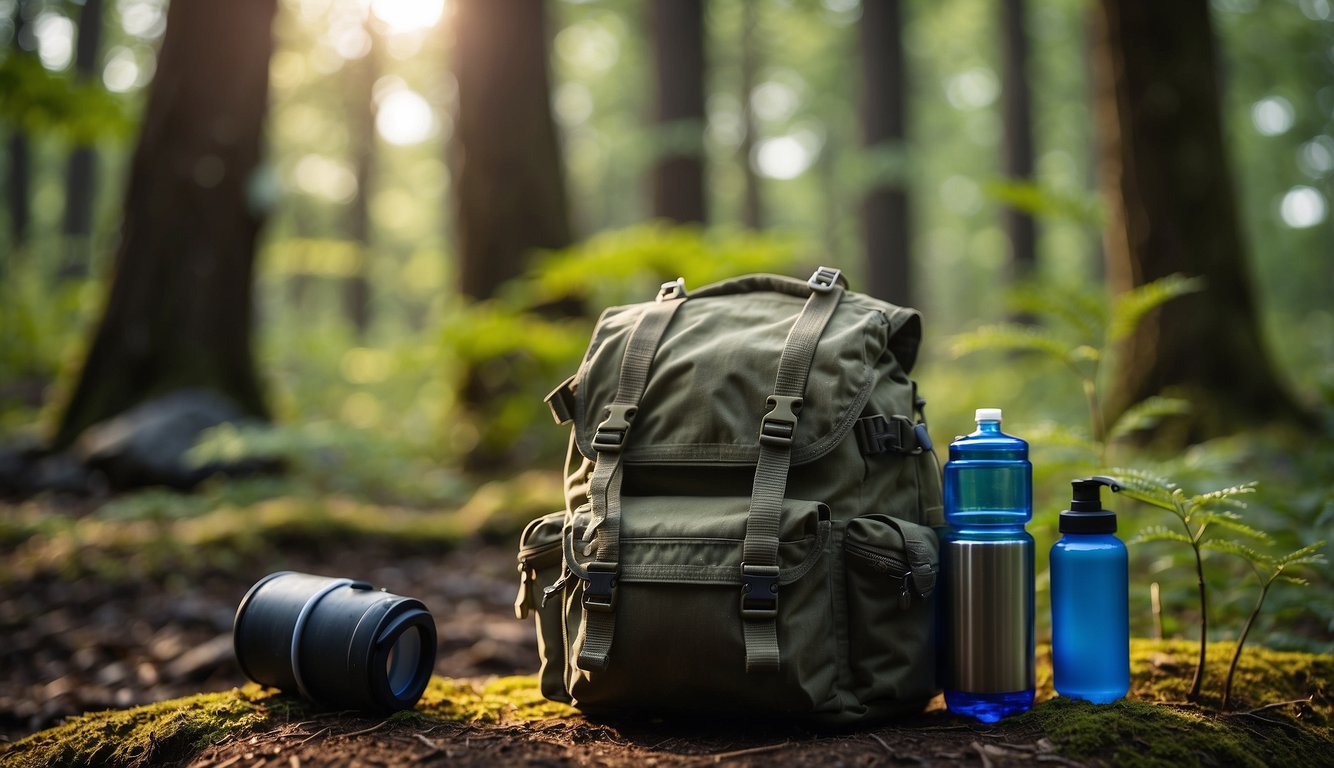
When it comes to surviving in the wilderness, having the right skills and knowledge can make all the difference. Here are some essential survival techniques that you should know:
Basic Survival Techniques
The first thing you need to do in a survival situation is to establish shelter, water, and fire. Knowing how to build a shelter, find and purify water, and start a fire can mean the difference between life and death. You should also know how to find and identify edible plants and animals, as well as how to prepare them for consumption.
Navigation and Signaling
If you’re lost in the wilderness, knowing how to navigate and signal for help is crucial. You should carry a compass and map with you at all times and know how to use them. You should also know how to signal for help using a whistle, mirror, or other signaling device.
Self-Defense and Safety
In a survival situation, you may need to defend yourself against wild animals or other threats. You should know how to use self-defense techniques and carry a self-defense tool such as pepper spray or a rifle if you’re in an area where it’s legal to do so. It’s also important to know basic first aid and carry a first aid kit with you.
Remember, survival skills and knowledge can mean the difference between life and death in a survival situation. Make sure you’re prepared by learning and practicing these essential techniques.
Maintenance and Upkeep
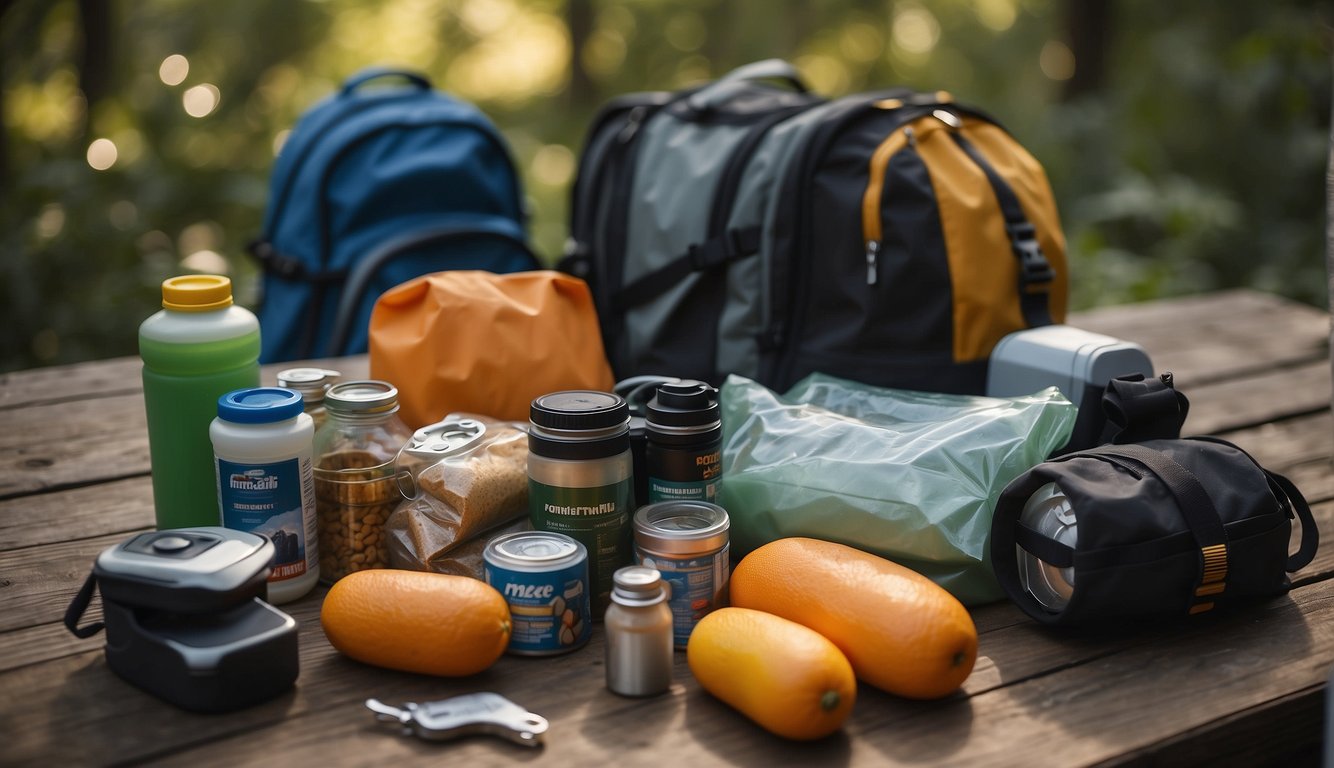
When it comes to bug out bags, maintenance and upkeep are crucial to ensure that the bag is always ready for use. Here are some important things to keep in mind:
Regular Check and Replenishment
It is essential to check your bug out bag regularly and replenish any items that have been used or expired. You should also check for any damage to the bag or its contents and repair or replace them as necessary. A checklist can be helpful to ensure that you have everything you need and that everything is in good condition.
Training and Practice
Having a bug out bag is one thing, but knowing how to use it effectively is another. Regular training and practice can help you become more familiar with the contents of your bag and how to use them in an emergency situation. You can also use this time to identify any gaps in your preparedness and make adjustments accordingly.
Staying Informed
Staying informed about current events and potential threats can help you make informed decisions about what to include in your bug out bag and how to use it. It is also important to stay up to date on any changes in the recommended items or techniques for survival. Reading reviews and recommendations from other preppers can also be helpful in making informed decisions about your bug out bag.
Overall, maintaining and updating your bug out bag should be a regular part of your preparedness routine. By following these tips, you can ensure that your bag is always ready to go when you need it most.
Legal and Ethical Considerations
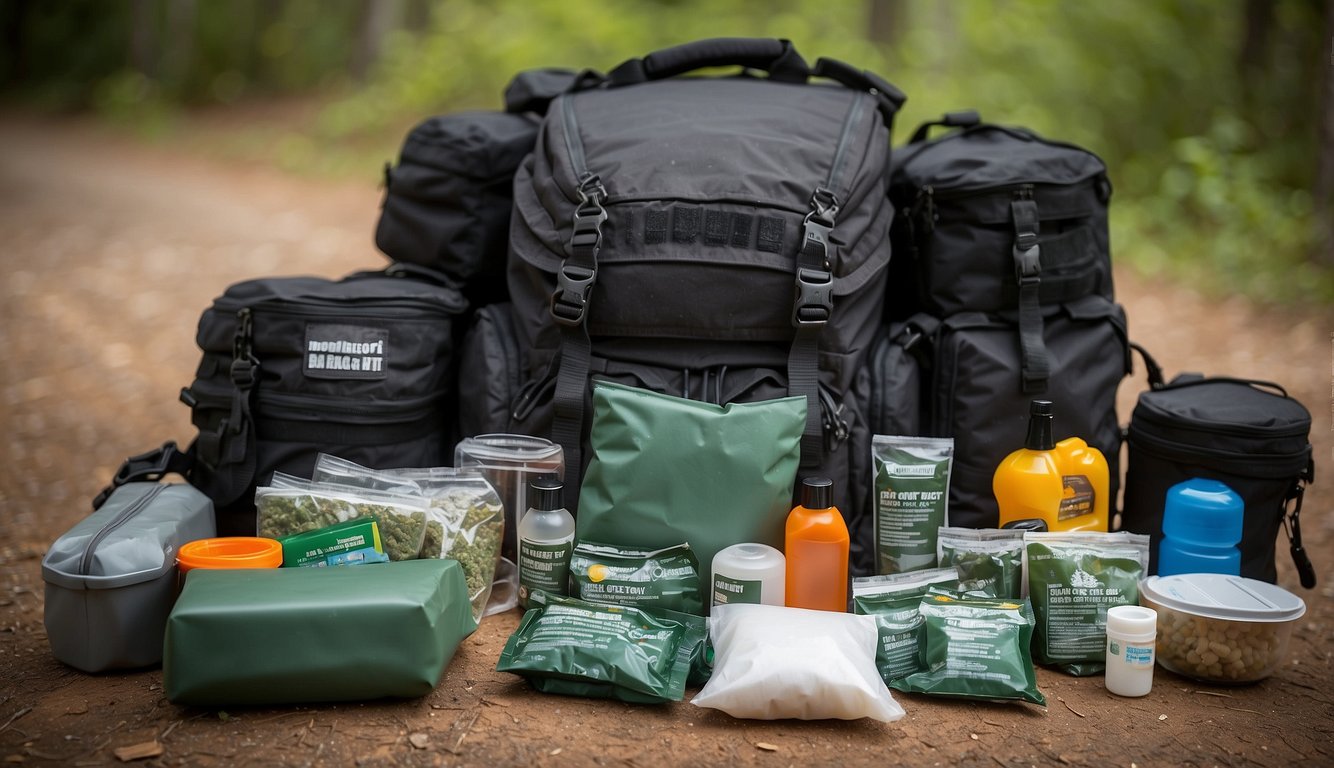
When preparing your bug out bag, it is important to consider the legal and ethical implications of your choices. Here are some things to keep in mind:
Carrying Weapons
While it may be tempting to include weapons in your bug out bag for self-defense purposes, it is important to understand the laws and regulations surrounding the carrying of weapons. In some areas, carrying certain types of weapons may be illegal or require a permit. It is your responsibility to research and comply with the laws in your area. Additionally, even if carrying a weapon is legal, it is important to consider the potential ethical implications of using it.
Respecting Private Property
In a bug out situation, it may be necessary to cross private property to reach your destination. However, it is important to respect the rights of property owners and not trespass without permission. If you must cross private property, be sure to do so respectfully and with the utmost care to avoid damaging any property.
Environmental Impact
When packing your bug out bag, it is important to consider the potential environmental impact of your choices. For example, using disposable items such as plastic water bottles or non-biodegradable food packaging can have a negative impact on the environment. Consider using reusable items and packing out any trash to minimize your impact on the environment.
Remember, while preparing your bug out bag, it is important to always act within the bounds of the law and consider the ethical implications of your choices.
Preparedness Beyond the Bug Out Bag

While a bug out bag is an essential part of emergency preparedness, it is not the only thing you should have in case of an emergency. Being prepared for emergencies at home, in your vehicle, and in your community is crucial for your safety and survival.
Home Preparedness Kits
Your home is where you spend most of your time, so it’s important to have a well-stocked emergency kit in case of a disaster. Your kit should include non-perishable food, water, first aid supplies, flashlights, batteries, and a radio. You should also have a plan in place for what to do in case of an emergency, such as a fire or earthquake.
Vehicle Emergency Kits
You never know when you might be stranded on the side of the road, so having an emergency kit in your car is essential. Your kit should include a first aid kit, water, non-perishable food, a flashlight, and a blanket. You should also have a spare tire, jack, and tire iron in case of a flat tire.
Community and Networking
In an emergency, your community can be a valuable resource. It’s important to get to know your neighbors and establish a network of people you can rely on in case of an emergency. You should also have a plan in place for how you will communicate with your loved ones in case of a disaster.
Being prepared for emergencies is not just about having a bug out bag. It’s about being ready for anything that comes your way. By having home preparedness kits, vehicle emergency kits, and a network of people you can rely on, you can increase your chances of survival in case of an emergency.

Leave a Reply